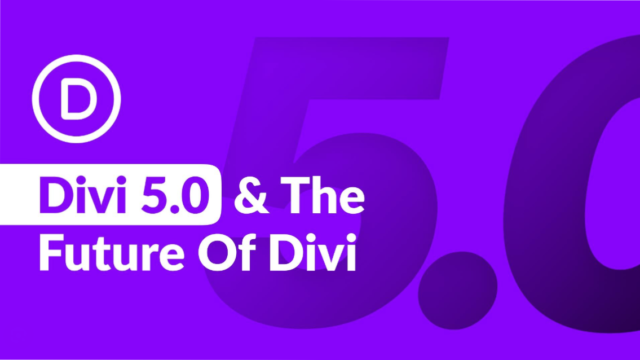Introduction
In today’s digital landscape, having a well-designed website isn’t just a luxury—it’s a necessity. Imagine visiting a site that takes forever to load, isn’t mobile-friendly, or is simply difficult to navigate. Frustrating, right? Now, consider how often you leave such sites immediately. You’re not alone. In fact, according to a Google study, 53% of mobile users abandon sites that take longer than three seconds to load. This is just one example of how web design can directly impact your site’s performance and its search engine optimization (SEO) success.
SEO is no longer just about keywords and backlinks. The technical aspects of your website, including its design, play a critical role in determining your ranking on search engines like Google. In this blog post, we’ll delve into the various ways web design influences SEO, covering key topics such as site speed, mobile optimization, user experience (UX), and more. By the end of this post, you’ll understand why web design is not just about aesthetics but a crucial component of your SEO strategy.
Why Web Design is Critical for SEO Success
1. The Technical Foundations: Code Quality and Structure
Your website’s underlying code is the bedrock of its SEO performance. A clean, well-structured codebase not only ensures that your site runs smoothly but also makes it easier for search engines to crawl and index your pages. When developers adhere to best practices—like using semantic HTML tags, optimizing images, and minimizing unnecessary scripts—they create a solid foundation that supports both usability and SEO.
Search engines rely on bots, often called crawlers, to navigate your site. If your website’s code is messy or disorganized, it can create barriers for these crawlers, making it difficult for them to understand the content on your site. This can lead to poor indexing, which directly impacts your search rankings. Therefore, web design emphasizing clean code and logical structure is critical for SEO success.
2. The Role of User Experience (UX) in SEO
User experience (UX) has become a significant ranking factor for search engines. Google, for instance, uses metrics like bounce rate, time on page, and click-through rate (CTR) to assess how users interact with your site. A well-designed website that offers a seamless, intuitive experience will naturally encourage users to stay longer and explore more pages. This positive user behavior signals to search engines that your site provides value, which can boost your rankings.
Poor UX, on the other hand, can have the opposite effect. If your site is difficult to navigate, cluttered with ads, or lacks clear calls to action, users are more likely to leave quickly. High bounce rates and low engagement metrics can negatively impact your SEO performance, making UX an integral part of your web design strategy.
3. Importance of a Visually Appealing Website
While functionality and performance are paramount, the visual appeal of your website should not be overlooked. Aesthetics play a vital role in creating a first impression, which can influence a user’s decision to stay or leave. A visually appealing website that aligns with your brand identity can enhance user engagement, build trust, and encourage repeat visits—all of which are positive signals to search engines.
Moreover, a well-designed website can also improve your site’s accessibility. For instance, using high-contrast colors and legible fonts can make your content more readable, which benefits all users, including those with visual impairments. An accessible website is not only user-friendly but also more likely to comply with search engine guidelines, contributing to better SEO outcomes.
Why Mobile-Friendly Design is Crucial for Search Rankings
1. The Rise of Mobile Search
Mobile search has overtaken desktop search in recent years, making mobile optimization a critical aspect of web design and SEO. According to Statista, as of 2023, mobile devices accounted for over 59% of global web traffic. This shift in user behavior has prompted search engines to prioritize mobile-friendly websites in their rankings.
Google’s mobile-first indexing means that the search engine predominantly uses the mobile version of your site for indexing and ranking. If your website is not optimized for mobile devices, it could significantly harm your search engine rankings. Therefore, ensuring that your site is mobile-friendly is no longer optional—it’s essential for SEO success.
2. How to Ensure Your Website Passes Google’s Mobile-Friendly Test
Google offers a Mobile-Friendly Test tool that allows you to check how easily a visitor can use your page on a mobile device. To pass this test, your site needs to meet several criteria:
- Responsive Design: Your site should automatically adjust to fit the screen size of the device used. Whether it’s a smartphone, tablet, or desktop, the layout should be easy to navigate without zooming or horizontal scrolling.
- Readable Text: Fonts should be large enough to read without zooming, and the color contrast should be sufficient to ensure readability.
- Interactive Elements: Buttons and links should be spaced adequately to avoid accidental clicks, and touch targets should be large enough to interact easily.
- Fast Loading Times: Mobile users expect quick access to information. Compress images, leverage browser caching, and minimize code to speed up your site.
Passing Google’s Mobile-Friendly Test is crucial for maintaining and improving your search rankings. It also ensures that your site provides a positive user experience across all devices.
Why Fast Loading Times are Essential for SEO
1. The Impact of Site Speed on User Experience
Site speed is a critical factor in both user experience and SEO. As mentioned earlier, users are quick to abandon slow-loading websites. According to a study by Akamai, a two-second delay in page load time can increase bounce rates by 103%. This not only results in lost potential customers but also sends negative signals to search engines about your site’s quality.
A fast-loading website ensures that users can access information quickly and efficiently, leading to higher engagement, lower bounce rates, and improved conversions. These positive interactions can contribute to better SEO performance, as search engines tend to favor sites that offer a superior user experience.
2. Google’s Core Web Vitals
In 2021, Google introduced Core Web Vitals as part of its ranking criteria. These metrics focus on three aspects of site performance:
- Largest Contentful Paint (LCP): Measures loading performance. To provide a good user experience, LCP should occur within 2.5 seconds of when the page first starts loading.
- First Input Delay (FID): Measures interactivity. Pages should have an FID of less than 100 milliseconds to ensure a responsive experience.
- Cumulative Layout Shift (CLS): Measures visual stability. Pages should maintain a CLS of less than 0.1 to avoid unexpected shifts in content layout.
Optimizing your site to meet these Core Web Vitals is essential for maintaining high search rankings. This includes optimizing images, leveraging browser caching, using a content delivery network (CDN), and minimizing JavaScript to improve site speed and stability.
Responsive Design vs. Mobile-First Design: Which is Better?
1. Understanding Responsive Design
Responsive design is a web design approach that ensures a website’s layout adjusts fluidly to fit different screen sizes and resolutions. The primary goal is to create a seamless user experience across all devices, whether it’s a desktop, tablet, or smartphone. With responsive design, the same HTML code is used for all devices, but CSS media queries are employed to modify the site’s appearance based on the device’s screen size.
The advantage of responsive design is its flexibility. It offers a consistent experience for users, regardless of the device they use, and is easier to maintain since it involves a single codebase. From an SEO perspective, responsive design is beneficial because it ensures that all users, whether on mobile or desktop, have access to the same content, which simplifies indexing for search engines.
2. Understanding Mobile-First Design
Mobile-first design, on the other hand, is an approach where the design process starts with the mobile version of the site, and then scales up to larger screens like desktops. This approach acknowledges the growing importance of mobile traffic and prioritizes the mobile user experience from the outset.
In a mobile-first design, developers focus on creating a streamlined, fast-loading experience for mobile users, often leading to a cleaner, more efficient design overall. This can be particularly advantageous for SEO, as it ensures that the mobile version of the site—which Google now primarily indexes—is fully optimized.
3. Which is the Better for SEO
Both responsive design and mobile-first design have their merits, but which is better for SEO? The answer depends on your specific needs and audience.
- Responsive Design: Best suited for websites that have a diverse audience using a variety of devices. It’s easier to implement and maintain, making it a solid choice for many businesses.
- Mobile-First Design: Ideal for businesses where mobile traffic dominates. If your analytics show that a significant portion of your users access your site via mobile devices, starting with a mobile-first approach can ensure a superior experience for your primary audience.
From an SEO perspective, mobile-first design has the edge in the current landscape, given Google’s emphasis on mobile-first indexing. However, responsive design remains a highly effective approach, particularly for sites with a more balanced traffic distribution between desktop and mobile users.
Conclusion: Integrating Web Design and SEO for Success
In conclusion, web design and SEO are intrinsically linked. A well-designed website does more than look good—it lays the foundation for SEO success. By focusing on key aspects like site speed, mobile optimization, user experience, and code quality, you can create a website that not only ranks well but also provides a positive experience for your users.
As search engines continue to evolve, the importance of web design in SEO will only grow. By staying ahead of these trends and prioritizing both aesthetics and functionality, you can ensure that your website not only attracts visitors but also keeps them engaged, ultimately leading to better search rankings and business success.
Remember, in the world of digital marketing, a visually appealing, user-friendly website is not just an asset—it’s a necessity. Whether you choose responsive design, mobile-first design, or a combination of both, the key is to create a site that meets the needs of your users and the demands of search engines.












